Cold Chain Logistics: Management Challenges & Solutions
The supply chain is a term used to describe all the components required to transport goods from beginning to end, from production to the end...
12 min read
 BUKU Marketing
:
Nov 30, 2022 1:00:00 PM
BUKU Marketing
:
Nov 30, 2022 1:00:00 PM

The retail industry is changing at an unprecedented pace. Retailers are finding new and innovative ways to market and sell their products, and customers are changing the way they shop for those products.
Table of Contents
1. eCommerce vs. Brick and Mortar
2. Using Both Structures In Your Business
3. Why Choose the Ecommerce Route?
4. Why Choose the Brick-and-Mortar Route?
5. Benefits of an Ecommerce Store
6. What Are the Benefits of Retail Brick-and-Mortar?
7. Disadvantages of Ecommerce Stores
8. Disadvantages of Retail Brick-and-Mortar
Ecommerce stores reached record sales during the pandemic and are expected to continue growing over the next decades.
Global eCommerce sales reached $4.9 trillion in 2021 and are expected to top $5 trillion in 2022.
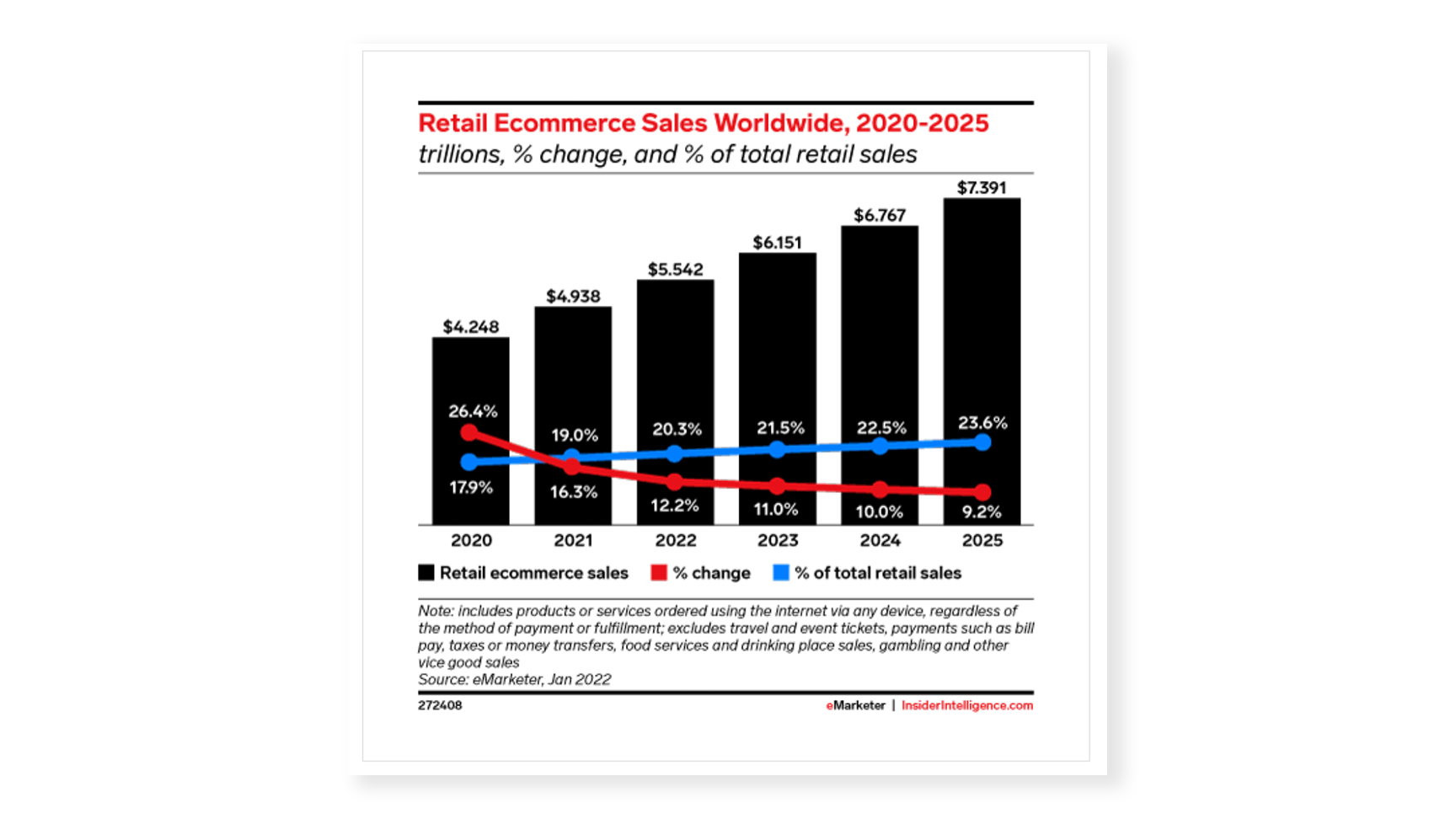
Ecommerce sales make up a growing percentage of all retail sales around the world but are not growing fast enough to completely replace traditional brick-and-mortar stores. The percentage of eCommerce sales spiked in 2020 at the onset of the pandemic, but still only averages around 19% of all global sales.
There are notable pros and cons to both eCommerce and physical retail store structures. They both have different costs involved, different requirements, and different draws for customers.
Many retail companies today are combining digital advertising and eCommerce methods with the traditional in-store experience, and in many cases, shoppers have come to expect businesses to offer both.
If you're wondering which structure is right for your business, you need to consider the pros and cons of each.
This article will examine the differences between eCommerce and brick-and-mortar stores and compare them to help you decide which is best for your situation and your business.
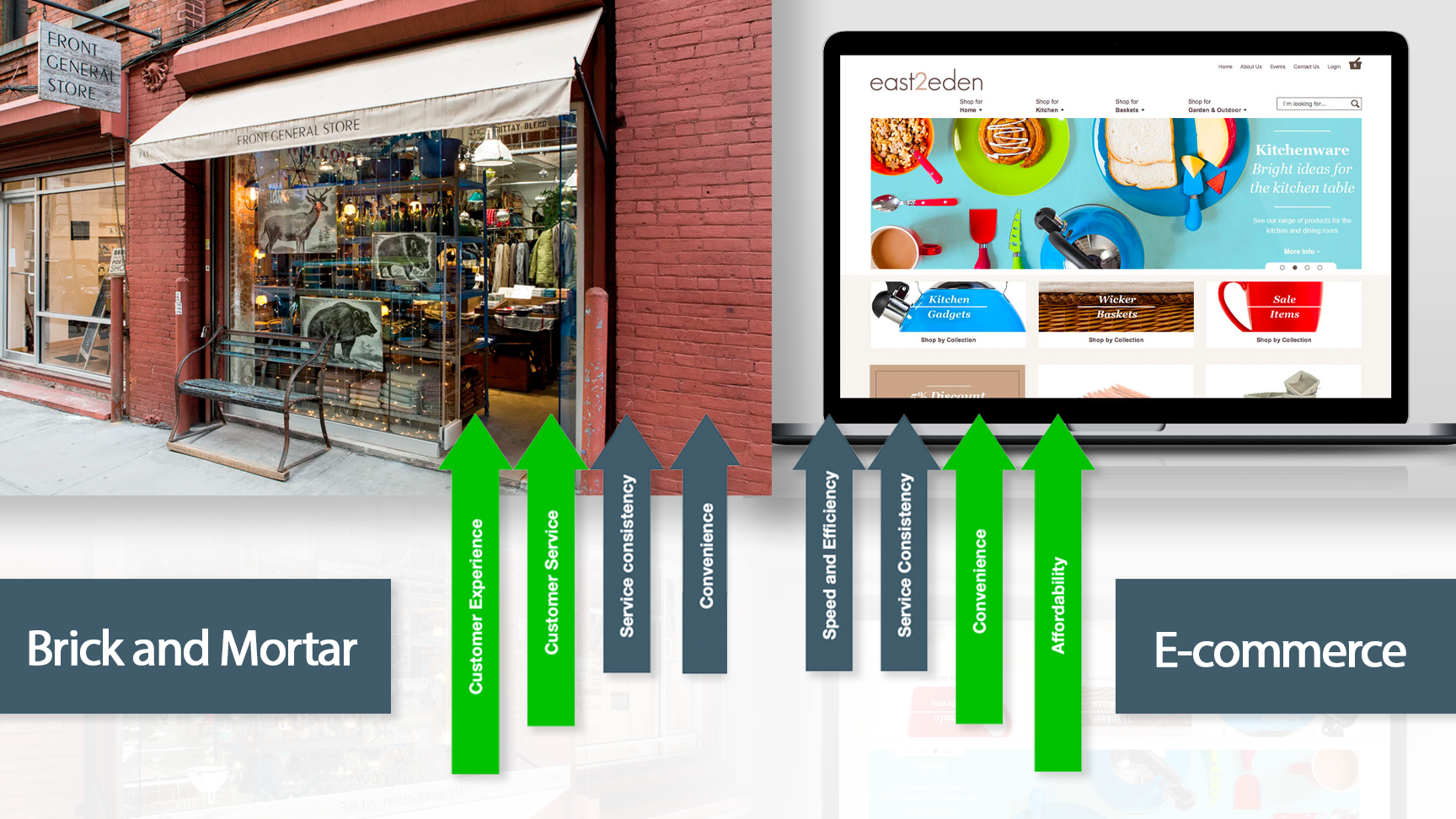
Choosing any business structure requires examining the factors involved that will have a direct impact on the budget, the complexity of getting the business set up, market competition, etcetera.
Each structure has its benefits and drawbacks, and understanding them will help you decide which would be best for your particular situation.
Some factors to consider when deciding between eCommerce vs. brick and mortar are:
The Budget – Physical retail stores obviously have upfront costs related to purchasing or renting a property, paying for utilities and insurance, buying and storing physical inventory, and hiring employees. While eCommerce businesses have the benefit of skipping many of these costs, they bring their own set of expenses, like website hosting fees and advertising. There may be fees associated with using already established online retail platforms and considerations of how you will handle inventory.
Customer Base – Online retailers have the advantage of being able to market their products to a global audience, while physical stores are typically limited to the immediate geographic region.
Depending on your target market, this can impact your ability to draw in new customers. If you live in an area with a vibrant shopping scene, you may have an advantage with having a physical retail store. However, if you live in a smaller city, then a physical retail store may limit your customer base.
Your Products – The type of products you plan to sell will certainly influence how you sell them. Many customers still appreciate brick-and-mortar stores because they offer the opportunity to physically examine products. Think of the ability to try on clothing items. While online retailers can still sell clothing items, customers who want to try on items before deciding will be unable to do so, and eCommerce stores might face a higher return rate as a result.
Your Availability as the Owner – Business management is no small feat, whether it takes place in a physical retail space or a digital one. Weighing the pros and cons of eCommerce vs. brick-and-mortar should include your expectations and availability.
Operating an eCommerce store definitely has its perks.
Some eCommerce stores may opt for operating from a small office space or require inventory storage space. However, those things don’t compare with the requirements put on the owner of a brick-and-mortar store, which will likely require your presence in the building during most operating hours, at least until you have a reliable manager to take over the tasks for you.
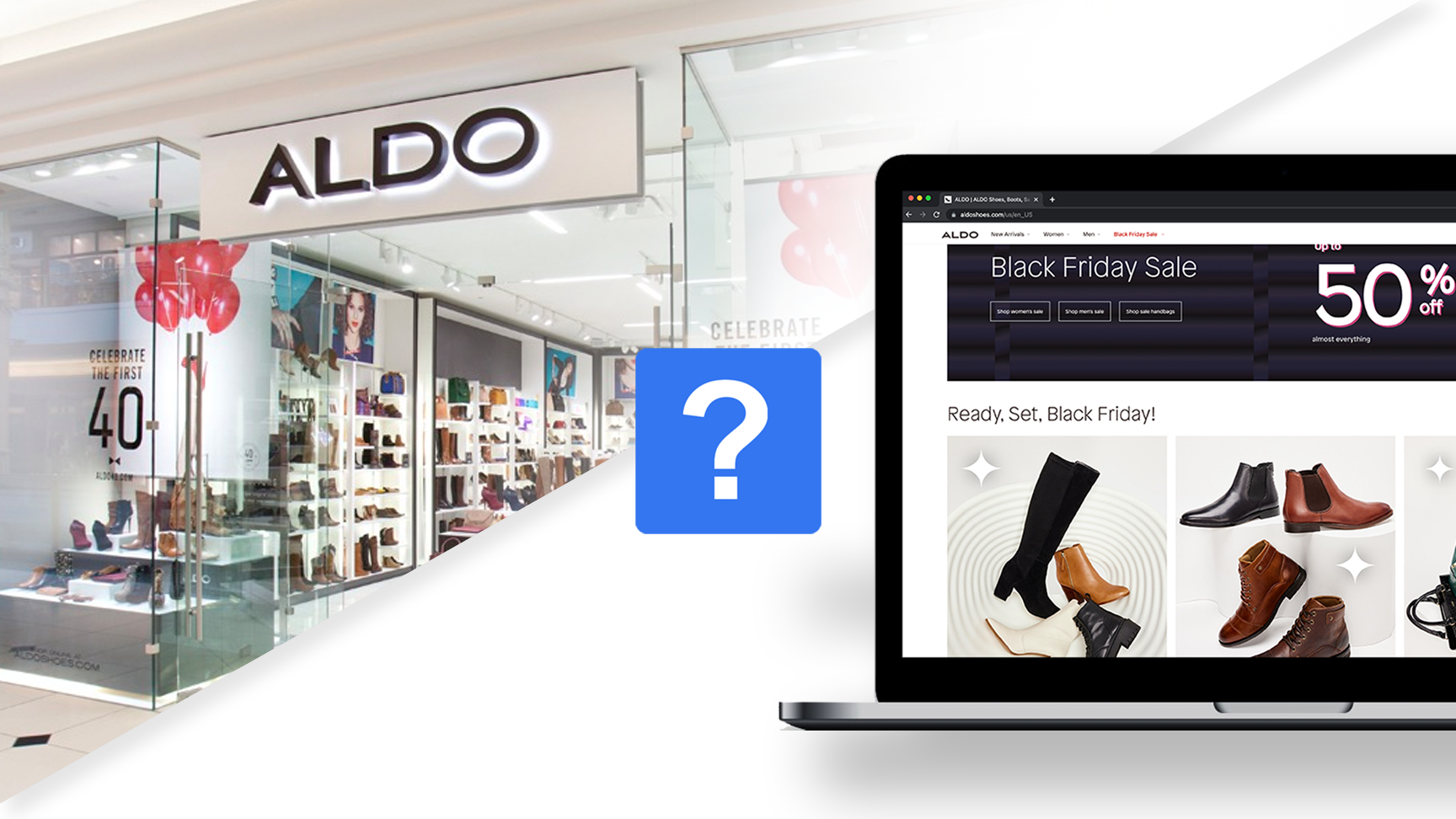
The days when eCommerce and brick-and-mortar stores are explicitly separate ventures are long gone. Nearly every large retail corporation now uses some type of digital sales tool alongside its physical shopping experience.
Think of retailers like Walmart and Target.
Customers can access online product listings, search tools, and sales and promotional advertisements directly from their smartphones while browsing the aisles.
Many retailers allow customers to shop online for products and have them shipped directly to their homes or the store for convenient pickup.
When considering the pros and cons of eCommerce vs. brick-and-mortar stores, you should consider if a mixture of both structures is something that will be feasible for your situation. Businesses with a small start-up budget may not have the assets to open a physical store right away. And physical retailers may not have the knowledge or time to dedicate to creating a digital presence.
Another benefit of operating an eCommerce store along with a brick-and-mortar location is inventory storage.
Physical retail locations usually offer ample storage space, which is something eCommerce stores may not have. However, if your eCommerce business is already paying extra costs associated with storing physical inventory, then operating from a physical retail store could potentially benefit you more.
However, the biggest consideration should relate to your customer base. If you have a physical retail store and draw a customer base that desires an online shopping option, then offering them that ability will certainly benefit your sales and growth.
Even one storefront in your hometown will increase visibility, build brand awareness in your community, and get you an extra slice of the retail market.
In today’s retail environment, combining a physical store with a digital presence is almost a requirement. Even if you don’t go all the way and offer online sales, incorporating digital advertising and marketing efforts will go a long way toward creating happier customers.
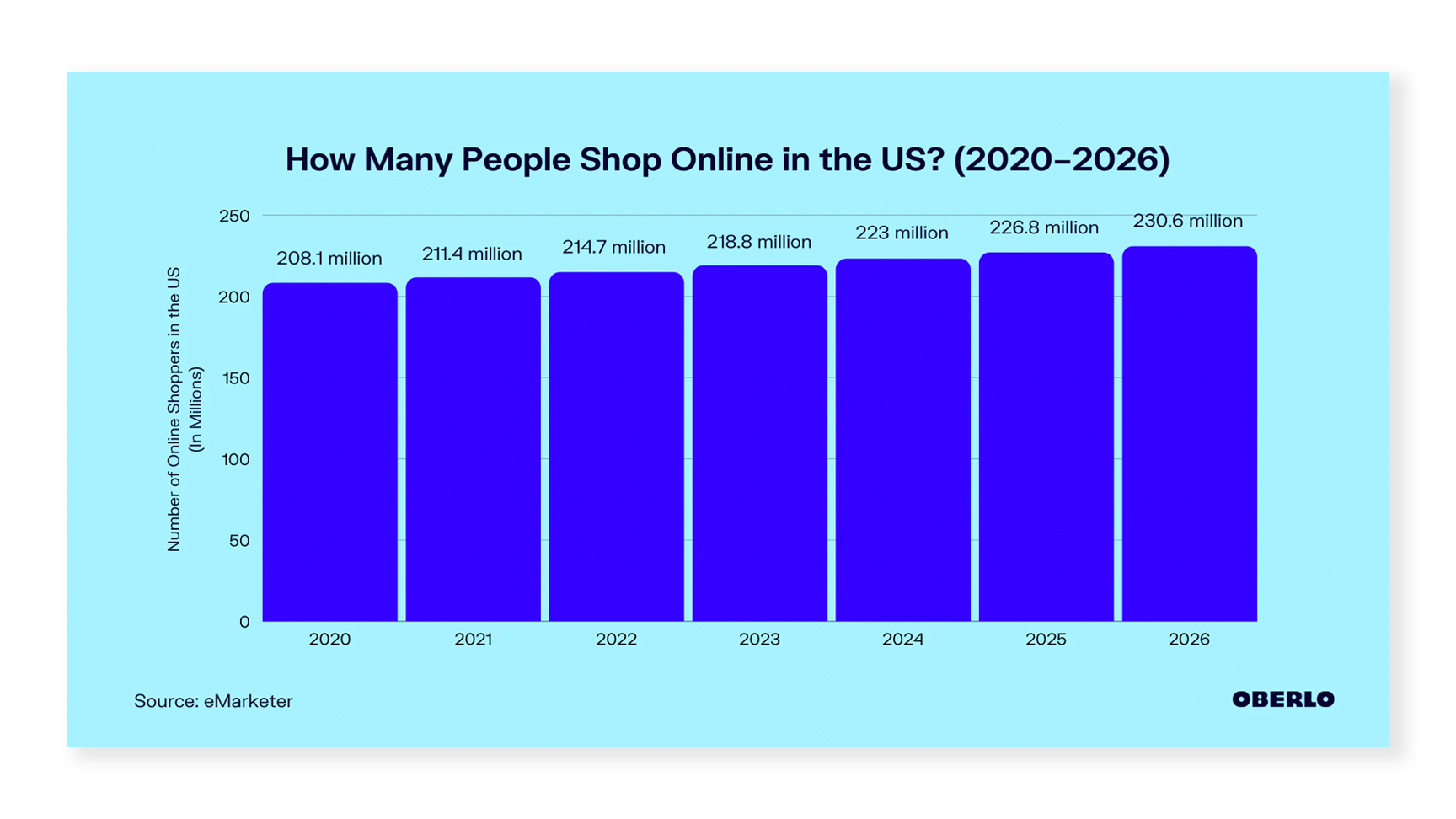
Ecommerce is a term that most people are familiar with today. But if you're looking to start an online retail store or examining the pros and cons of eCommerce vs. brick-and-mortar sales, it will be beneficial to understand what exactly eCommerce is and the different ways businesses can use online sales.
Ecommerce has been around since the early 1990s, and just three decades later has become a strong competitor for physical store sales. As the popularity of the internet has grown and technologies have advanced, more people are turning to digital sales for their shopping needs. It’s estimated that over 218 million U.S. consumers will shop online in 2023.
Ecommerce, or electronic commerce, specifically relates to the online sale of goods or services. There are multiple ways that businesses can sell their products online. Let's examine the different eCommerce structures.
Business to Business (B2B) - B2B companies market and sell their products to other businesses. These are often wholesale transactions or may take place in the tech realm, selling services and solutions to businesses online.
Business to Customer (B2C) - B2C businesses sell their products directly to consumers and this is the most typical structure for eCommerce sales.
These are the different ways eCommerce sites can sell their products. Although, eCommerce businesses can also differ in the way they set up their sales process.
Some businesses might sell physical goods online and others might sell digital products, like software. Some people might market their skills through the internet, operating as freelancers.
Ecommerce stores can also use a third-party platform to set up their online store. Many businesses use third-party platforms like Amazon or Shopify, because they provide an easy and fast way to set up your store and get started selling products.
In exchange for a small commission fee, businesses get the benefit of integrated tools that take some of the complexity out of the process.
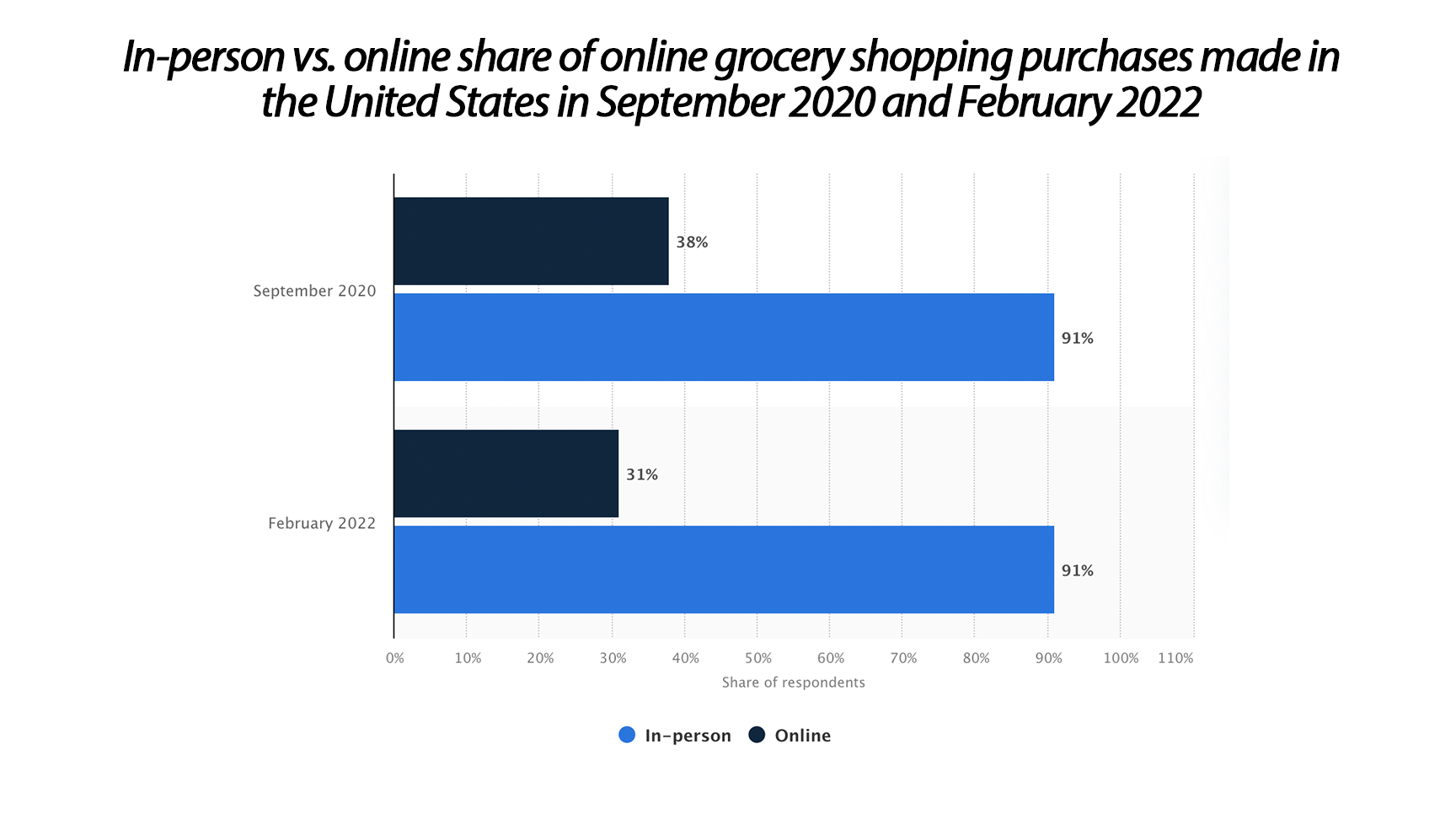
Back in the day, brick-and-mortar stores were just called stores.
Due to the rise of digital retailing, the industry has adopted the term brick-and-mortar to refer to retail businesses that use physical locations to sell their products.
Other terms you might hear include in-store or in-person shopping. All these terms refer to businesses that have a physical storefront that customers can visit and shop for products in person.
When considering using eCommerce vs. brick-and-mortar sales for your business, it’s important to evaluate your particular market and product.
Many products can be sold just as easily through both methods, both in a physical store and online. Many other products lend themselves to a traditional in-person shopping experience. For example, some perishable items are harder and more costly to handle in a digital retail structure.
Brick-and-mortar stores offer customers the chance to browse a physical retail location while they're shopping. This can be a great benefit because many customers are impulse buyers. Businesses that have a physical store will be able to net extra sales by creating visually pleasing displays and marketing through sales and promotions.
There is also the benefit of having real, person-to-person interactions, which is something eCommerce stores are unable to duplicate.
Brick-and-mortar stores attract their customers from within their community, and in many cases, it is easier to build a loyal customer base. Many people enjoy the experience of shopping at the same place every day. They get to know the employees and enjoy interactions with real people.
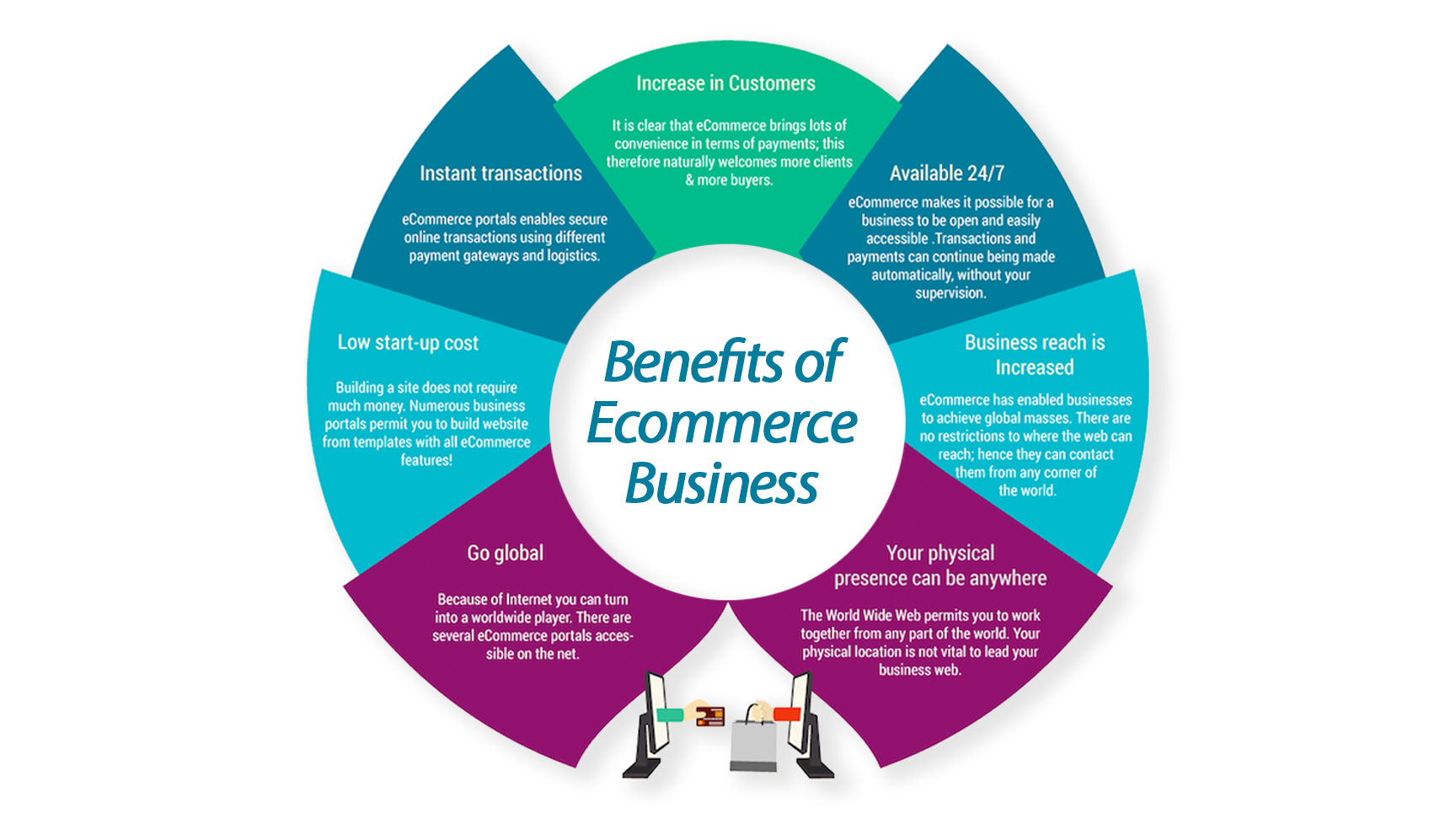
Many businesses are turning to setting up an eCommerce store because it offers many benefits, especially during the initial setup process.
When considering the amount of time it takes to establish an eCommerce store compared to a physical retail store, the differences are glaring.
The biggest advantage for eCommerce retailers likely comes in the form of start-up cost savings. All you need to get started selling online is a computer, internet access, and products. While there are other costs associated with actually doing business online, such as building a website and marketing, they do not compare to the upfront costs physical retailers must pay to get started.
Ecommerce stores can reach customers around the world with the click of a mouse and can sell to those customers from anywhere. They are not tied to a specific geographic location for their customers. This is a huge advantage over brick-and-mortar stores, who are limited to customers within reach of their physical location.
There are many ways eCommerce stores can implement digital advertising and marketing strategies for their businesses. Since they already operate in a digital space, they can easily market themselves directly to the consumers who are most likely to purchase their products, through mediums such as social media or paid digital ads.
Ecommerce stores not only get the benefit of time savings upon initial setup of their business, but they save time through the sales process itself. Customers can shop and purchase items within minutes. This is a great advantage for online retailers because today’s consumers are constantly on the go and always looking for a way to save some time in their day. A percentage of consumers don't want to spend time visiting a physical location and enjoy the convenience offered by shopping online.
Growing an eCommerce business is far easier than expanding a brick-and-mortar location. There is no need to purchase another property if you want to grow your digital business. Ecommerce stores get the benefit of easy and quick scalability.
Consumers like to shop around, and the eCommerce structure makes it easier for them to do so. Instead of driving from store to store looking for the best deals, digital shoppers can simply search for the best prices online and even compare prices between companies in an instant.
Physical retailers might have the benefit of displaying physical inventory, but eCommerce stores can take advantage of individually crafted product listings and descriptions. When done correctly, a product description can take the place of a salesperson, allowing the company to detail the benefits and features of each product and helping customers understand exactly why they should purchase a particular product.
When a customer leaves a physical retail store, they’re pretty much just gone for good. Ecommerce stores can utilize automated online tools to reach out to customers who abandon a cart before checking out, reach out and thank customers after a successful purchase, and offer them incentives to return for future purchases.
Ecommerce stores typically have higher margins on their products because they face lower overhead costs. That means more revenue generated and more profit for your pocket.
Selling online means you can use tools and solutions that can create reports detailing every action taken, or not taken, by a customer. This allows eCommerce companies access to valuable insights about their customers and the success of their sales process, which can help them implement new strategies and improve those processes in the future.
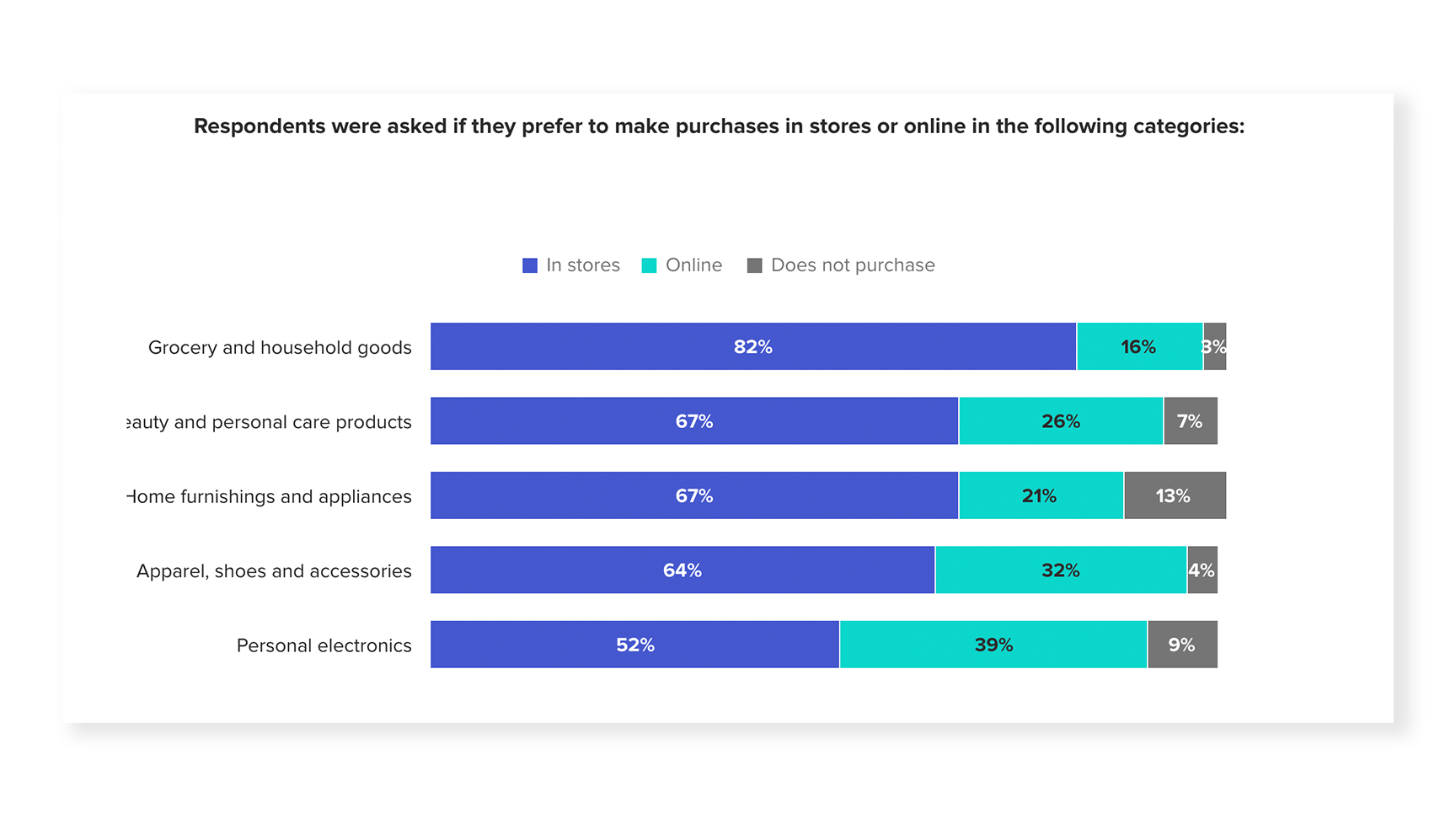
When it comes to comparing eCommerce and brick-and-mortar stores, there are clearly many benefits in digital retailing that physical retail stores cannot offer. However, the truth is that traditional retail stores do have a lot to offer business owners and their customers.
The biggest benefit brick-and-mortar stores have is the ability for customers to physically examine products before deciding to buy. Ecommerce stores must rely on product images or video, but their customers don't have the chance to hold and see the products they intend to buy like they do in a physical space.
Physical retail stores have an advantage over eCommerce stores because they allow for actual human interaction between the business and the consumer. Sometimes, there is no better way to make a sale than by actually interacting face-to-face with a customer.
Customers shopping in a brick-and-mortar store can walk in, make a purchase, and then walk out with their new products. Ecommerce stores are unable to replicate that process, even with one-day shipping. The instant gratification allowed by in-store shopping is a benefit only available to physical retail locations.
Brick-and-mortar stores can offer instant, in-store customer service from actual salespeople. Ecommerce stores might have an instant messaging or chat feature that allows customers to reach out when they need assistance, but the effect is not the same as having an actual person available to assist customers in the store.
Since brick-and-mortar stores operate within their neighborhoods, they get the benefit of building customer loyalty and gaining repeat business. Consumers enjoy building a relationship with the places they shop, and many start to see employees as part of their inner circle. Having a dedicated physical presence also helps establish a brand and allows companies to demonstrate their culture to consumers.
While eCommerce stores have increased the ways in which they can accept payment from customers since the early days of online retail, there is still one payment method that is unavailable to them – cash. Brick-and-mortar stores can accept multiple payment methods and have even gained the ability to accept digital forms of payment that were at one time only available to online retailers, like Apple Pay. On top of those methods, they can always accept cash for payment, which is something many consumers still appreciate.
Brick-and-mortar stores have an enhanced ability to upsell customers who are in the middle of their shopping experience. They can employ direct upsell conversations at the cash register and on the sales floor and they can use in-store savings that may persuade customers to buy items they didn’t originally intend to purchase. The in-store, physical nature of brick-and-mortar stores means that every product available for sale is easily displayed and right in front of potential buyers.
Another way for brick-and-mortar stores to get additional sales is by creating stunning, visual displays. Studies show stores that utilize endcaps, or the displays located at the end of an aisle, increase the sale of those displayed items by 23% to 1197%. In-store displays give physical retailers another way to remind customers of something they might want instead of only capturing those sales the customer originally visited the store to purchase.
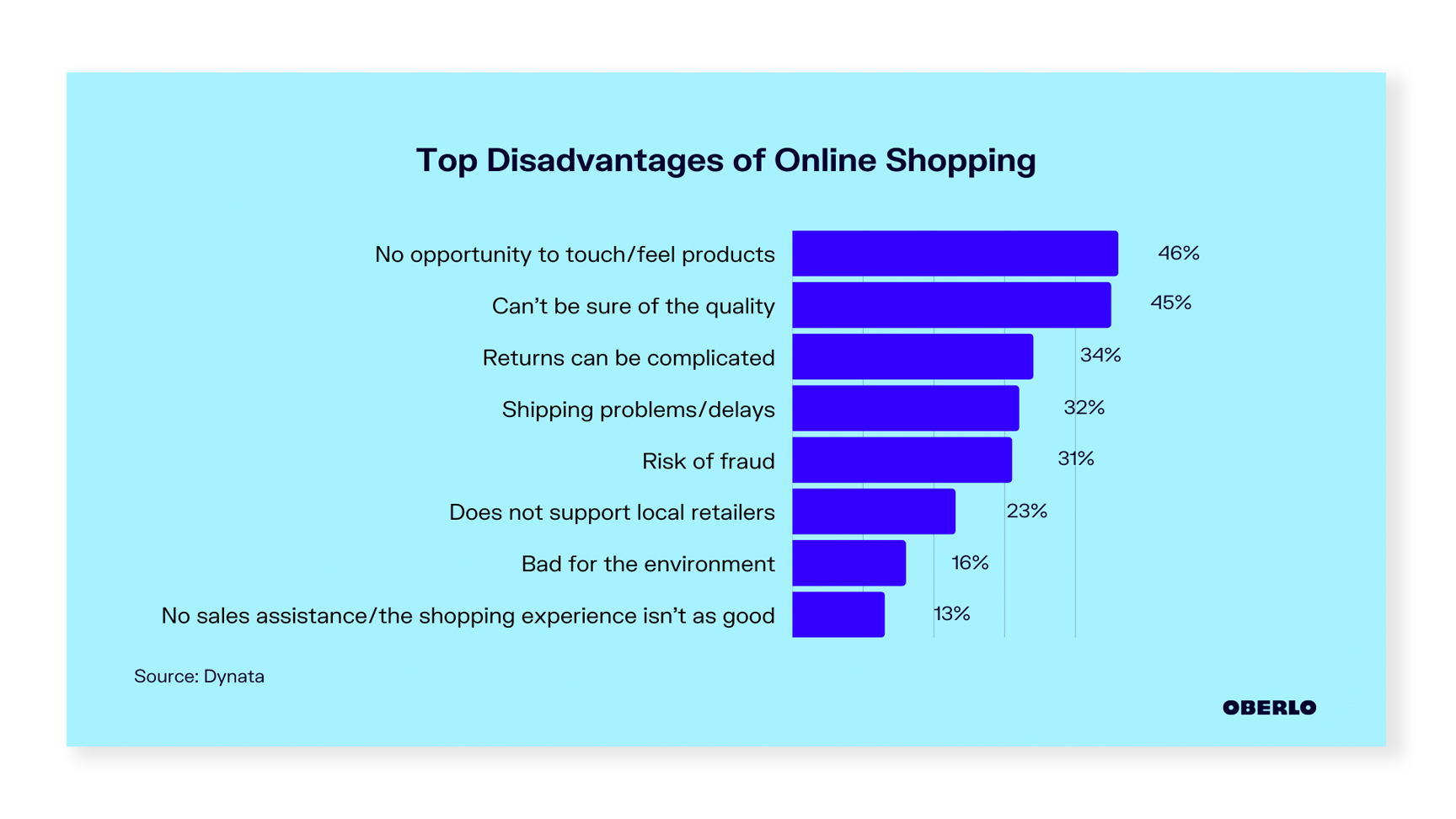
While eCommerce retail has many benefits, companies will recognize the common drawbacks of this method of selling. Digital transactions are impersonal, something brick-and-mortar stores don't have to worry about. When considering the pros and cons of eCommerce vs. brick-and-mortar, it's important to look at the drawbacks of digital retailing as well as the benefits.
The biggest disadvantage for eCommerce stores is a decreased ability to develop customer relationships. While there are ways for eCommerce companies to reach out to consumers online, such as social media, digital advertising, and email marketing, there is simply no equivalent to face-to-face, personal interaction with a potential buyer.
Processing sales online is safer than it ever has been before. However, there is still a risk, especially for customers, of data and security breaches when information is transferred online. In 2020, Estee Lauder discovered an unsecured online database that put the information of 440 million customers at risk. Data breaches like these pose a serious threat to the security of consumers.
Ecommerce stores have a limited ability to prove themselves to consumers because they rely on digital interactions. Consumers can walk into a physical retail store and experience a part of the company culture for themselves. They can look around at the care the company puts into maintaining its property and examine the quality of the products. These things are a reflection of a company’s trustworthiness, which is a quality that consumers highly value.
Brick-and-mortar stores face the majority of their competition from their immediate market, meaning those stores within proximity to their location. Ecommerce stores, on the other hand, face competition from every other online retailer out there who sells a similar product. Nothing is stopping a customer from clicking away from your online store and into another. Ecommerce stores must employ specific strategies to stand out from the competition and work harder to build customer loyalty.
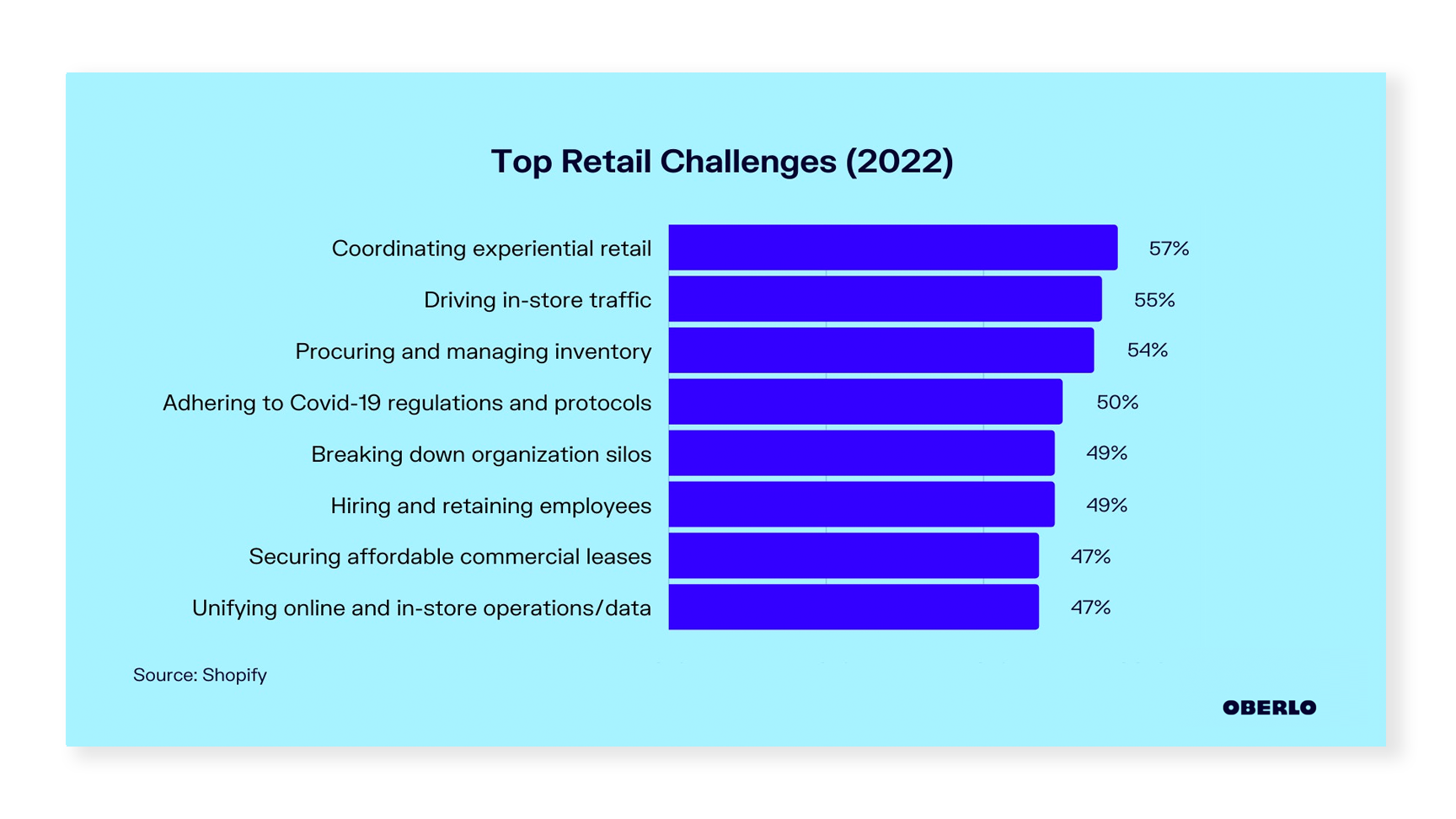
In-person retail stores also have their own drawbacks, considering how they are limited to the customers within the area. If you truly want to understand the pros and cons of eCommerce vs. bricks-and-mortar, then you need to look at the issue from all angles. In this section, we dive into the disadvantages of operating a brick-and-mortar store, which are:
The disadvantages of brick-and-mortar selling start before the first sale is even made. You will need to locate a physical building for sale or rent and put in a significant investment before moving into the property. This usually means finding an investor or taking out loans to cover the cost. There will also be costs associated with utilities, insurance, licensing, inventory, advertising, and labor. All these costs will need to be paid upfront before any profit is made.
All of those upfront costs, as well as recurring, ongoing costs like rent and labor, will eat into your profit margins when operating from a physical retail space. Ecommerce stores can turn much higher margins because they don't need to pay rent, utilities, or labor during the startup stage.
Brick-and-mortar stores might have an easier time building customer loyalty within their communities, but they are unable to build that same kind of loyalty on a global scale. Ecommerce companies are not limited by their location like physical retail stores are, and have access to customers anywhere in the world.
While brick-and-mortar stores used to only face competition from their immediate neighbors, the increasing popularity of online retailing poses a threat. That's because most large retailers, even those who started with only a physical presence, now offer some sort of digital interaction for customers.
Your shoppers can access price comparisons from competitors while shopping in your store. Also, large online retailers, like Amazon, can offer lower prices and free shipping on virtually any item you can think of – meaning many customers opt for the ease, convenience, and price savings they can get by buying online.
The question of which is the right approach, operating an eCommerce or physical retail store, is a complicated one and there is no clear right answer. The decision on how to structure your business will have a lot to do with your personal situation, your capabilities in investing both time and money, and your vision for the future of your business.
Each structure has its advantages and disadvantages that should be considered.
Deciding which structure will work best for you is a personal decision that only you can make. In many cases, business owners should consider the idea of creating an omnichannel business, which means you have both a physical retail location and an online presence.

The supply chain is a term used to describe all the components required to transport goods from beginning to end, from production to the end...
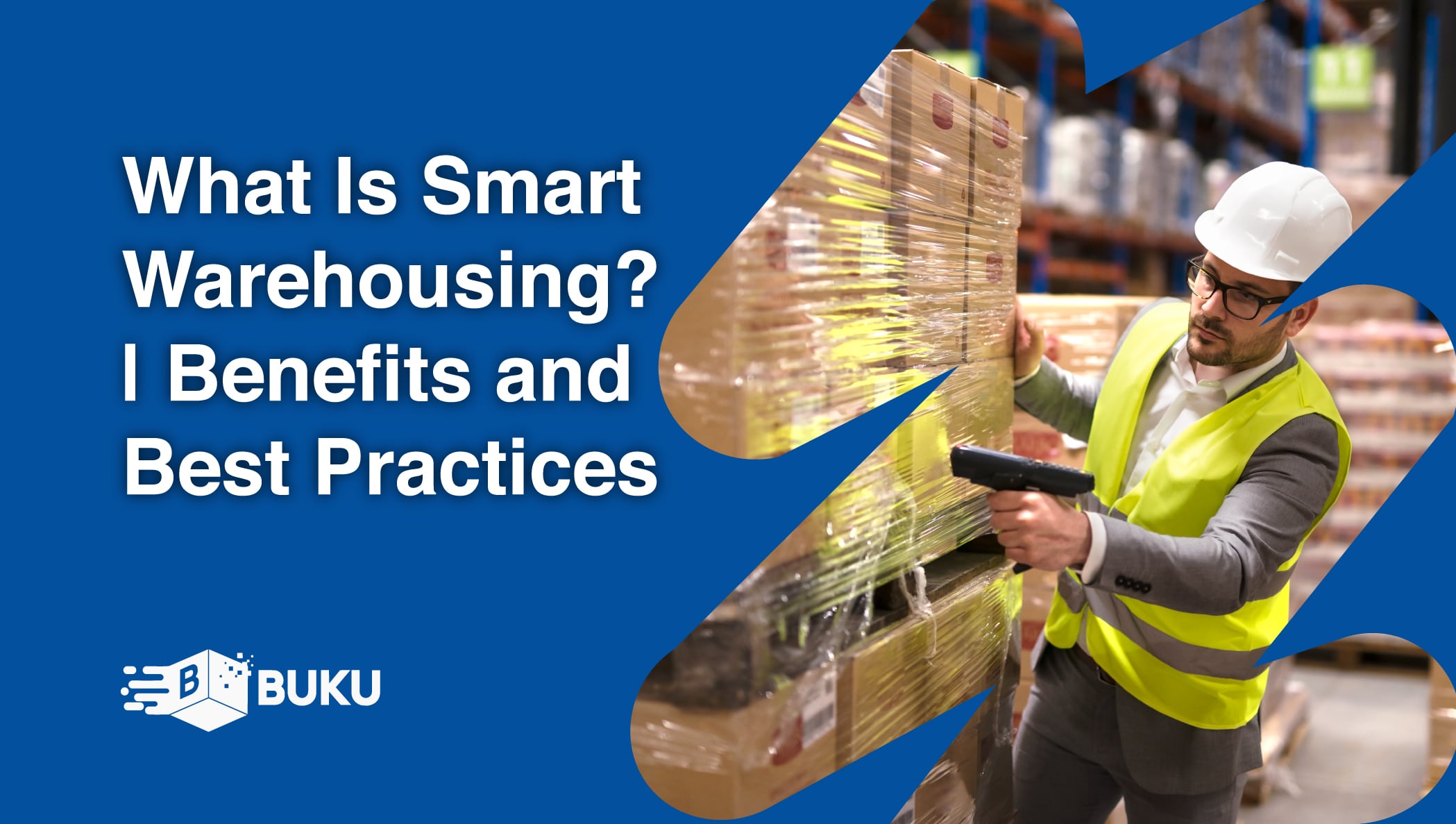
A smart warehouse is a large building where raw materials and other consumer goods are stored using machines, computers, comprehensive software, and...
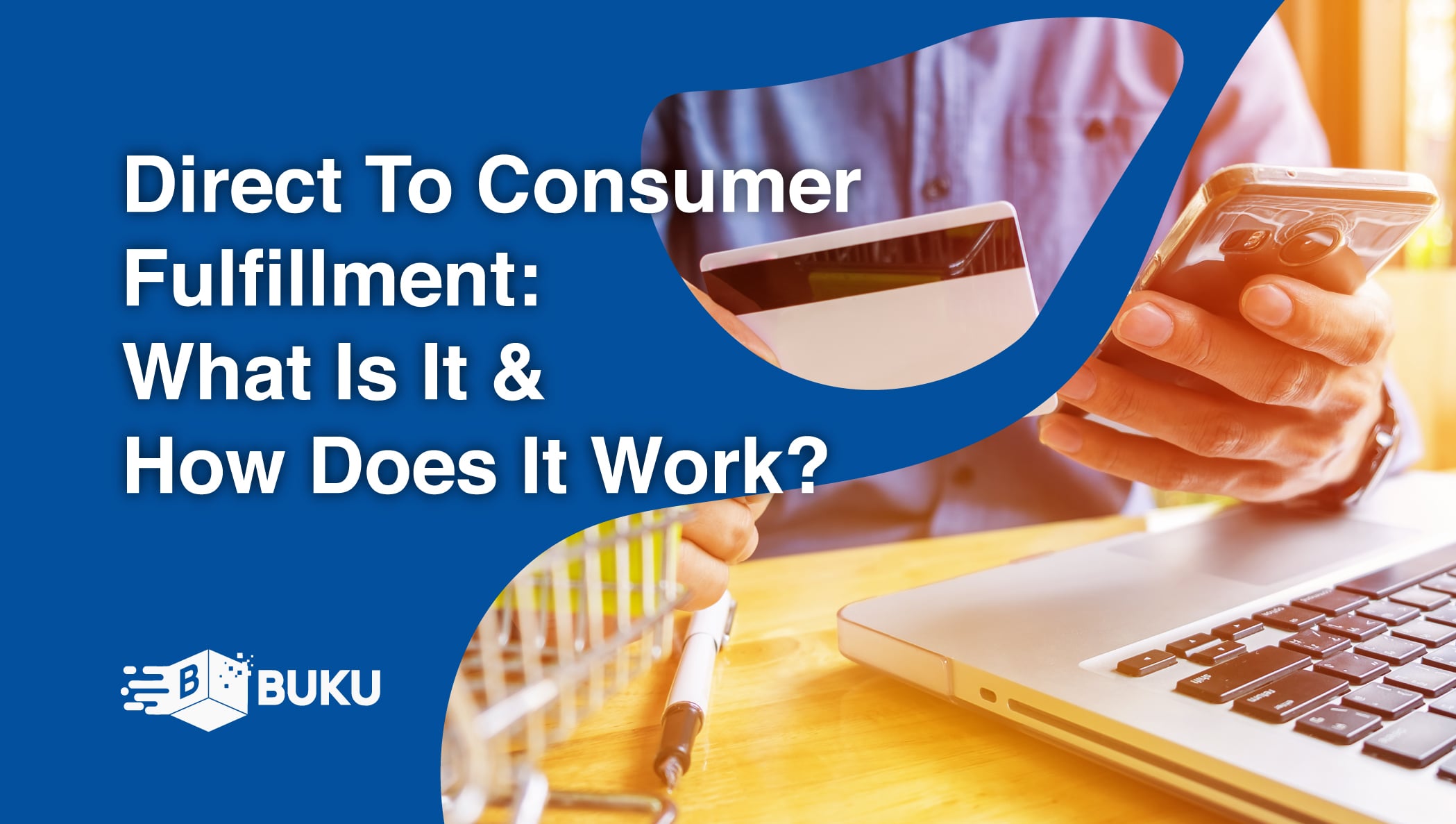
Direct-to-consumer (DTC) fulfillment is a strategy that helps brands sell and deliver their products directly to customers more efficiently while...